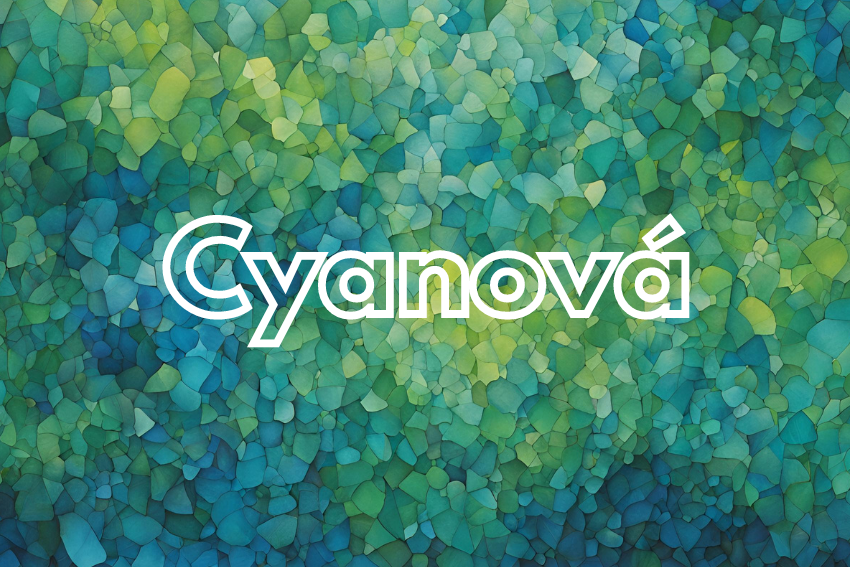Color is a charming side of our daily lives, changing moods, communication, design, and science. One of the most appealing colors in the visible spectrum is the cyan (Cyanová). Positioned between blue and green, cyan is a vibrant color that often goes unnoticed in its versatility. In this article, we will dive into the concept of “Cyanová” — an exploration of cyan, where blue meets green, and its importance in different areas like art, science, and technology.
What is Cyanová?
“Cyanová” is a conceptual term derived from the combination of “cyan” and a suffix that could suggest a deeper exploration or entity related to cyan. It essentially represents the idea of where blue meets green in the color spectrum. Cyan sits between these two primary colors and embodies qualities of both, symbolizing a harmonious blend of tranquility (from blue) and renewal (from green).
In a broader sense, Cyanová can be seen as a metaphor for exploring this middle ground where the characteristics of blue and green merge. It highlights how cyan exists both scientifically and culturally in areas like nature, design, fashion, technology, and emotional psychology, standing as a connection point between opposing qualities such as calmness and vitality.
This concept allows us to explore cyan’s significance not only in terms of color theory but also in how it influences art, branding, technology, and even human emotions. By introducing “Cyanová,” we bring attention to the nuanced power and beauty of cyan as a color that connects two worlds — blue and green.
The Science Behind Cyanová: Understanding the Spectrum
Before we delve deeper into cyan’s influence, it is essential to understand its scientific roots in the visible spectrum.
- Where does cyan fall in the spectrum?
Cyan is found between blue and green wavelengths, typically ranging between 490 and 520 nanometers (nm) in the visible light spectrum. - How is cyan perceived by the human eye?
The perception of cyan occurs when our cone cells (the photoreceptor cells in our eyes) react to both blue and green light. The brain interprets this combination of signals as cyan. - Cyan in the additive color system (RGB):
In digital media and screen displays, cyan is one of the primary subtractive colors (CMY) but is created by combining blue and green in the additive RGB model. Cyan is achieved when no red light is present, and only blue and green are emitted at equal intensities.
Cyanová in Nature: A Color of Tranquility and Life
Cyan, as it appears in nature, often symbolizes purity, tranquility, and life. Its association with water and air gives it a refreshing and calming presence.
- Bodies of water:
The natural blue-green tint of oceans, lakes, and rivers is one of cyan’s most prominent manifestations. The color of the water often reflects the sky’s blue light and the green hue of algae beneath the surface, blending into various shades of cyan. - The sky:
After sunrise or before sunset, certain shades of cyan become visible in the sky, especially when sunlight scatters through the atmosphere, mixing with blue and green wavelengths. - In flora and fauna:
Some plants and animals showcase cyan naturally. The feathers of birds like kingfishers and the scales of tropical fish often display cyan hues, providing camouflage or attracting mates.
Cyanová in Art and Design: A Color of Modernity
In visual arts and design, cyan represents modernity, innovation, and boldness. It is used frequently for its ability to stand out while remaining soothing to the eyes.
- Cyan in painting:
While traditional painters used pigments like cerulean, blue, or turquoise to achieve cyan shades, modern technology offers purer cyan through synthetic pigments. The color plays a vital role in abstract and contemporary art for its vibrancy and cooling effect. - Graphic design and branding:
Cyan is often chosen by brands looking to convey trust, clarity, and forward-thinking. Tech companies and corporations use cyan in their logos and websites to suggest reliability and modernity (e.g., Twitter, Skype). - Cyan in digital art:
Cyan is a primary color in digital design, thanks to its prominence in the RGB color model. Graphic designers utilize it for creating vivid and contrasting imagery that grabs attention without overwhelming the viewer.
The Emotional and Psychological Impact of Cyanová
Colors play a profound role in human psychology, and cyan is no exception. Its unique position between blue and green allows it to carry emotional traits from both hues.
- Soothing and calming effects:
Cyan’s close connection with water and the sky makes it a calming color, often used in relaxation spaces or meditation environments. It can reduce anxiety and bring about feelings of peace. - Balance and rejuvenation:
While blue tends to symbolize calm and green represents growth and renewal, cyan holds the balance between the two. This makes it a rejuvenating color, often used in spas or health centers to foster a sense of healing and refreshment. - Clarity and communication:
In contrast to warmer tones like red or orange, which can signal urgency or excitement, cyan conveys clarity and openness. Its use in communication platforms (such as instant messaging apps) taps into this psychological association.
Cyanová in Technology and Innovation
Cyan is not just an aesthetic choice; it plays a significant role in technological innovation and displays.
- Digital screens and displays:
Cyan color is combination of the three primary colors in the CMYK printing model and is essential in creating a broad spectrum of colors on digital screens. It is particularly important in LED and LCD screens, which rely on the RGB color model.
- Augmented and virtual reality:
In the worlds of AR and VR, cyan is commonly used in user interfaces to highlight interactive elements or give a futuristic touch to digital environments. The cool tones evoke a sense of technology and modernity.
- The role of cyan in scientific visualization:
Cyan is frequently used in visualizing scientific data, particularly in imaging technology like MRIs or oceanographic charts. Its ability to contrast with both blue and green makes it ideal for displaying intricate details in complex datasets.
Cyanová in Fashion and Trends
Cyan has been making a resurgence in the fashion world, particularly in modern styles that embrace bold and unique color choices.
- A modern take on fashion:
In recent years, cyan has been embraced by fashion designers for its vibrant yet soothing qualities. It is a perfect color for both high-end couture and streetwear, often symbolizing a mix of boldness and relaxation. - Gender-neutral appeal:
Cyan’s blend of blue and green gives it a unique neutrality. It is neither too traditionally masculine nor overly feminine, making it popular in gender-neutral clothing lines and designs. - Accessories and accents:
Even if cyan is too bold for some in full outfits, it has become a popular choice for accessories and accents. Handbags, shoes, and jewelry in cyan can add a pop of color without overpowering the entire ensemble.
The Cultural Significance of Cyan
Across various cultures, cyan has different symbolic meanings. Its association with nature and technology makes it a color of both tradition and the future.
- Cyan in Eastern cultures:
In many Asian cultures, cyan (and turquoise) is often associated with healing and protection. It is considered a lucky color that symbolizes balance and spiritual guidance. - Western symbolism:
In Western cultures, cyan is tied to themes of cleanliness, health, and clarity. It is often used in medical contexts or industries related to hygiene and well-being. - Spiritual meanings:
In color psychology and spirituality, cyan can be linked to the throat chakra, which represents communication and truth. Wearing or meditating with cyan is thought to encourage honest expression and open dialogue.
Conclusion
In this exploration of “Cyanová,” we see that cyan is more than just a midpoint between blue and green. It serves as a bridge between tranquility and renewal, tradition and technology, and emotional depth and clarity. Its presence in nature, art, fashion, and technology cements its role as a dynamic color in the modern world. Whether calming us with its serene shades or guiding innovation with its futuristic tone, cyan remains a versatile and impactful color across various disciplines.
So next time you look at the sky, swim in the ocean, or interact with digital media, take a moment to appreciate the power and beauty of cyan – where blue meets green and the magic begins.
FAQs
What does Cyanová represent?
Cyanová represents the convergence of blue and green in the color spectrum, symbolizing a balance between calmness (blue) and vitality (green).
What color shade is Cyanová?
Cyanová is a vibrant blue-green shade, commonly associated with the color cyan, reflecting a mix of coolness and freshness.
What is the closest color to Cyanová?
The closest color to Cyanová is aqua or turquoise, both of which share the same blue-green blend found in cyan.
Where does cyan fall in the color spectrum?
Cyan falls between blue and green in the visible light spectrum, specifically between wavelengths of 490 and 520 nanometers.
How is cyan created in digital displays?
Cyan is created in digital displays using the RGB model, where green and blue light are mixed in equal intensities without red light.
How does cyan impact emotions?
Cyan evokes feelings of tranquility, clarity, and balance, often associated with calmness and mental refreshment.
Why is cyan used in technology?
Cyan is a crucial color in digital displays, AR/VR interfaces, and scientific visualizations due to its clarity and modern, futuristic appeal.
What cultural significance does cyan hold?
Cyan symbolizes healing, protection, and balance in Eastern cultures, and is often linked to health, cleanliness, and clarity in Western societies.
How is cyan used in fashion?
Cyan is popular in fashion for its vibrant yet soothing quality, often used in modern, gender-neutral, or bold statement pieces.
What role does cyan play in nature?
Cyan is commonly seen in oceans, lakes, and the sky, symbolizing the purity and life-giving qualities of water and air.












